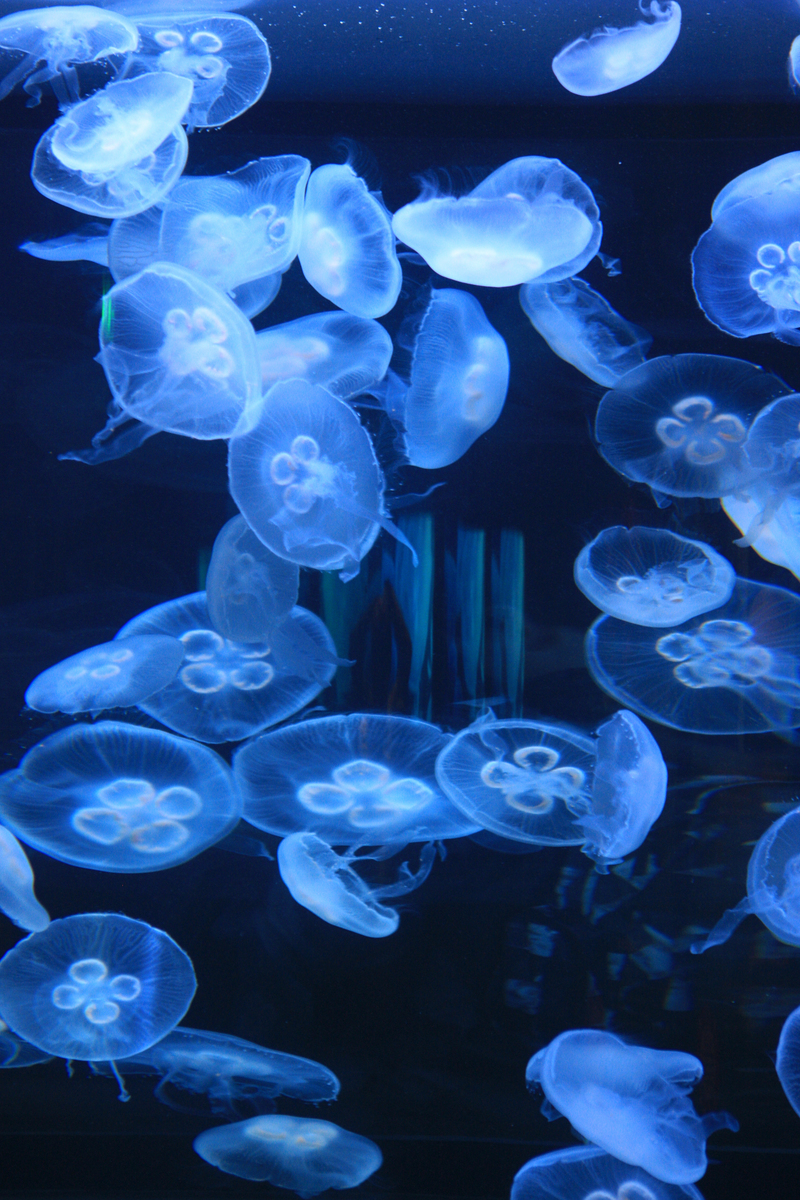common jellyfish, moon jelly (Aurelia aurita) Aurelia aurita has two main stages in its life cycle – the polyp stage (asexual reproduction) and the medusa stage (sexual reproduction). A mature polyp reproduces asexually, known as budding forming an entire colony of polyps. Polyps specializing in reproduction produce ephyra (small medusae) by budding. The medusae swim off and mature. They then reproduce sexually. From the egg and the sperm of two medusae, a zygote is formed. The zygote develops into a planula (larva). The planula larva leaves the adult medusae, finds a shaded surface, and attaches itself to it. The planula eventually develops into a new polyp, and the life cycle of the Aurelia aurita starts again.
Date 2 May 2012, 12:29
Source Moon Jellies (Aurelia aurita)
Author Cliff http://www.flickr.com/people/28567825@N03 from Arlington, Virginia, USA
Source: https://commons.wikimedia.org/wiki/File:Moon_Jellies_(Aurelia_aurita)_(7153399193).jpg
The common jellyfish, moon jellyfish, moon jelly, or saucer jelly (Aurelia aurita) is a widely studied species of the genus Aurelia. The moon jellyfish is translucent and can be recognized by its four horseshoe-shaped gonads, easily seen through the top of the bell. Aurelia aurita is found along the eastern Atlantic coast of Northern Europe and the western Atlantic coast of North America.
